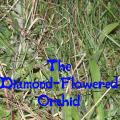The Diamond-Flowered Orchid — 9 of 14
Frank Gevaerts
Section 5 - The Wound
amputating is an action applying to one visible thing.
Understand "amputate [thing]" as amputating.
Understand "cut off [thing]" as amputating.
Check amputating arms:
say "That seems like an overreaction. The wound isn't *that* bad! Also, you have no tools sharp enough to cut off limbs.";
stop the action;
Check amputating legs:
say "It's true, leeches wouldn't bother you any more if you did that. Unfortunately you don't have anything sharp enough.";
stop the action;
arms are a kind of supporter. Arms are part of every person.
Understand "arm" as arms.
the wound is a thing with description "[if the wound is bandaged]Your wound is nicely cleaned and bandaged. It will be fine until you get back home.[end if][if the wound is cleaned and the wound is unbandaged]Your wound looks better, but you should find something to bandage it with.[end if][if the wound is dirty]You got a wound on your arm during the crash. You should clean it and bandage it.[end if]" . The wound can be dirty or cleaned. The wound is dirty. The wound can be bandaged or unbandaged. The wound is unbandaged.
When play begins:
move wound to the location of the player;
try silently taking the wound;
try silently putting the wound on a random arms that is part of the player.
Carry out examining arms:
if the wound is bandaged:
say "You have a wound on your arm, but it's nicely bandaged. You'll be fine!";
otherwise:
if the wound is dirty:
say "You have a wound on your arm that you need to clean and bandage.";
otherwise:
say "Your wound is nice and clean, but you should bandage it.";
now examine text printed is true.
The examine supporters rule does nothing when examining arms.
Armremind is a number that varies. Armremind is 10.
Every turn when the wound is dirty:
increase armremind by 1;
if armremind > 3:
say "Your arm [if armremind < 10]still [end if]hurts. Maybe you should look at it";
now armremind is 0;
Every turn when the wound is cleaned and the wound is unbandaged:
increase armremind by 1;
if armremind > 3:
say "You still need to do something about the wound on your arm";
now armremind is 0;
cleaning it with is an action applying to two visible things.
Understand "clean [thing] with [thing]" as cleaning it with.
cleaning is an action applying to one visible thing.
Understand "clean [thing]" as cleaning.
Check cleaning when the player is not holding a full vessel and the location of the player is not the waterfall:
say "You are not carrying any water.";
stop the action;
Carry out cleaning when the location of the player is not the waterfall:
let the tool be a random full vessel held by the player;
try cleaning the noun with the tool;
Carry out cleaning when the location of the player is the waterfall:
try cleaning the noun with the river;
Check cleaning when the noun is not the wound:
say "[The noun] does not need cleaning.";
stop the action;
Check cleaning it with when the second noun is not a vessel and the second noun is not the river:
say "You can't clean things with [a second noun]!";
stop the action;
Check cleaning the wound with something when the wound is cleaned:
say "[The wound] is already clean.";
stop the action.
Carry out cleaning the wound with a full vessel:
say "You clean the wound on your arm. It looks much better now. You still want to bandage it though.";
if Vorple is supported:
play sound effect "clean.mp3";
now the wound is cleaned;
now the second noun is empty.
Carry out cleaning the wound with the river:
say "You clean the wound on your arm. It looks much better now. You still want to bandage it though.";
if Vorple is supported:
play sound effect "clean.mp3";
now the wound is cleaned.
Does the player mean cleaning the wound: it is very likely.
bandaging it with is an action applying to two visible things.
Understand "bandage [thing] with [thing]" as bandaging it with.
bandaging is an action applying to one visible thing.
Understand "bandage [thing]" as bandaging.
Check bandaging when the player is not holding the banana leaf:
say "You don't have anything that can serve as a bandage.";
stop the action;
Carry out bandaging:
try bandaging the noun with the banana leaf;
Check bandaging when the noun is not the wound:
say "[The noun] does not need bandaging.";
stop the action;
Check bandaging it with when the second noun is not the banana leaf:
say "You can't bandage things with [a second noun]!";
stop the action;
Check bandaging the wound with something when the wound is bandaged:
say "[The wound] is already bandaged.";
stop the action.
Carry out bandaging the wound with the banana leaf:
say "You carefully wrap [the second noun] around [the noun]. This should hold until you get home.";
remove the banana leaf from play;
now the wound is bandaged.
Does the player mean bandaging the wound: it is very likely.
